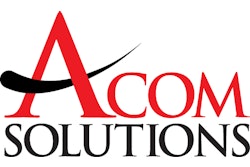Survey shows that lack of usable catalog data, low supplier enrollment and poor product content management hamper e-procurement, spend management efforts
Herndon, VA — March 17, 2004 — Enterprise cost management provider ePlus inc. today released the results of a survey indicating that many organizations with existing e-procurement and spend management systems are failing to reap anticipated benefits because the systems cannot utilize, create or manage supplier catalog data.
Without usable product information and parametrically searchable catalogs from multiple preferred vendors, ePlus said that many corporate initiatives such as spend management and e-procurement are not realizing their anticipated return on investment (ROI), costing companies millions of dollars.
Limited supplier enrollment and failure to implement product content management programs appear to be contributing to the gap between potential and actual returns by restricting end users' ability to make catalog based-purchases, the survey indicated. Downstream, the effort to track and manage enterprise spend is impeded by disparate, inaccurate or missing data.
The survey showed that:
* Only about 30 percent of the respondents have a formal product content management program in place to equip suppliers with tools for rapid loading and updating of product content, and to standardize product data for easy searching and comparison shopping by requisitioners.
* Approximately 60 percent of the respondents have placed fewer than 40 suppliers on electronic catalog-enabled purchasing, despite the fact that respondents have relationships with 2,000 to 100,000 vendors. This may reflect the difficulty of on-boarding suppliers without the appropriate tools.
* Seventy percent ranked product/part duplication and end users' inability to locate products in electronic catalogs as the major challenges in product content management, reflecting deficiencies in product standardization and normalization, catalog navigation and search engine technologies.
* A full 90 percent named data normalization as an issue of "considerable" concern in implementing product content management. Other issues of major concern were supplier enablement (70 percent), data categorization (60 percent), analysis of spending patterns (60 percent), and providing end users with rich and easy-to-find catalog content (60 percent).
* More than 50 percent of the respondents purchase less than 15 percent of their goods through their e-procurement systems, leaving the vast majority of spend untouched and unmanaged despite expensive procurement programs.
* About 50 percent are unable to determine total spend on direct and indirect goods, and 60 percent expressed difficulty in calculating direct spend with external suppliers in an accurate and timely fashion, hampering efforts to obtain the data required to optimize sourcing decisions.
* More than 30 percent cannot determine if their organization purchases similar commodities from multiple suppliers, making it difficult to leverage spend and reduce costs by supplier consolidation and contract buying.
* Approximately 50 percent cannot determine if suppliers are providing goods at pre-negotiated pricing, creating challenges in enforcing contracts and volume discounts.
* Over 80 percent must gather spend information from three or more applications such as accounting, e-procurement, legacy, enterprise resource planning (ERP) and paper systems, causing impediments to spend visibility.
"e-Procurement can drive significant hard dollar savings, process efficiencies and compliance improvements," said Tim Minahan, vice president of Supply Chain Research at Aberdeen Group. "However, many of these savings are lost due to the fact that the typical enterprise manages less than 20 percent of its spend through its e-procurement system."
Minhan added that the chief culprit is that most e-procurement users have dedicated insufficient resources to enabling and managing product content in an electronic catalog. The ability to quickly and easily load, cleanse, standardize, normalize and maintain that data is critical to success.
"Enterprises that select the appropriate tools and dedicate sufficient resources to managing product content effectively are more likely to receive the supplier cooperation required to achieve greater returns from their e-procurement investments," he predicted.
The survey was conducted in January at a two-day meeting of the ePlus Content Advisory Council. Participants included representatives from Fortune 500 firms and other large organizations who assist ePlus in determining the product content management functions required for effective e-procurement and spend management programs. The majority of respondents have more than 20,000 employees.










